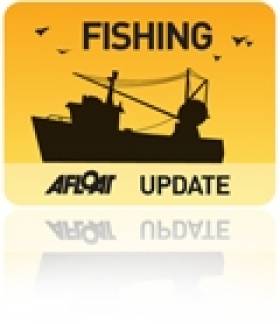Displaying items by tag: East Pier Wicklow
‘Angelus’ Trawler Also Appears On Pierside Gallery
Apart from the mural of the trawler (click HERE) there are a wide variety of vessels represented from general cargo-ships and the inclusion of STV Asgard II and the World's last ocean-going paddle-steamer P.S. Waverley. These vessels have too berthed alongside the adorned eastern breakwater where spectators flock to see the start of the biennial Round Ireland Yacht Race which was held last year.
The photo of the trawler was taken on a previous call at the Packet Quay, Wicklow and not Arklow as stated. The Packet Pier is the most used commercial quay in the Co. Wicklow port, where timber and scrap-metal cargoes are relatively common. For example the Arklow Rebel which loaded scrap-metal bound for Liverpool, to read more click HERE.





























































